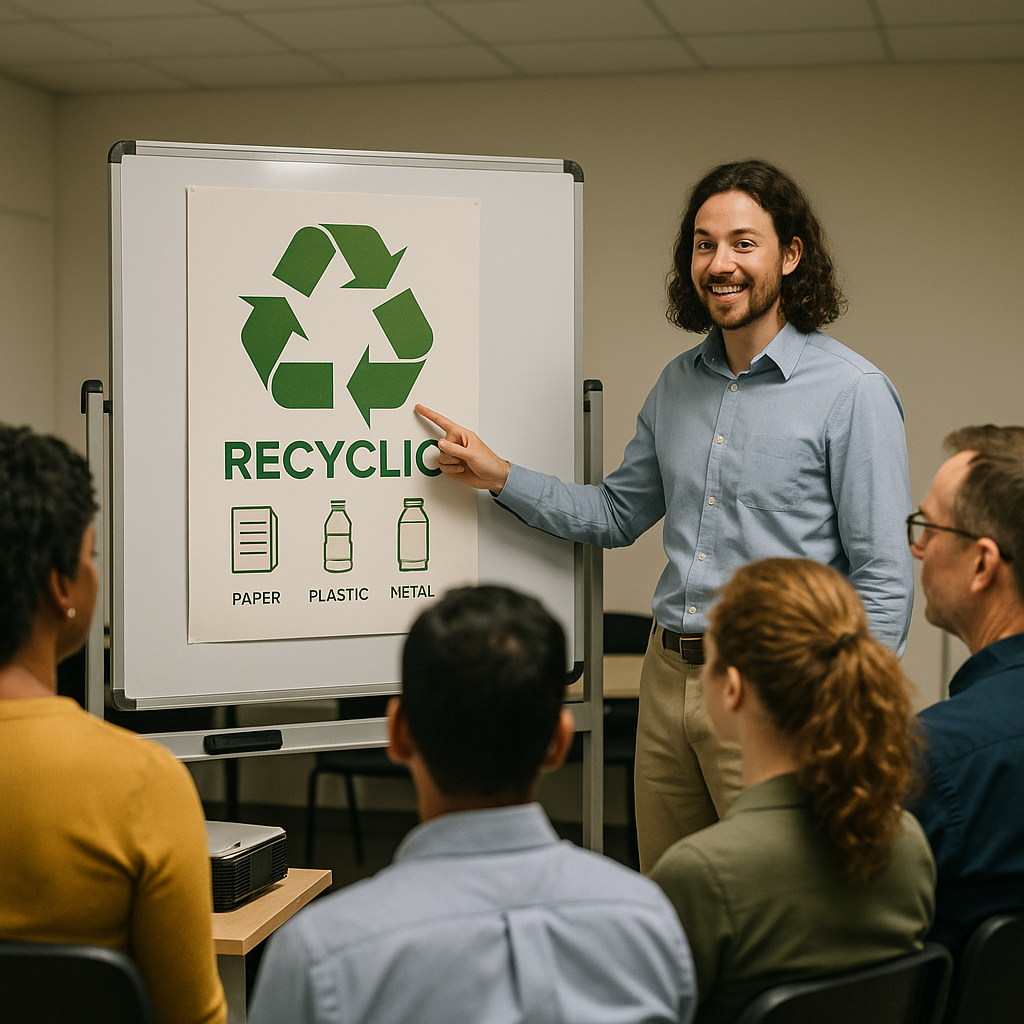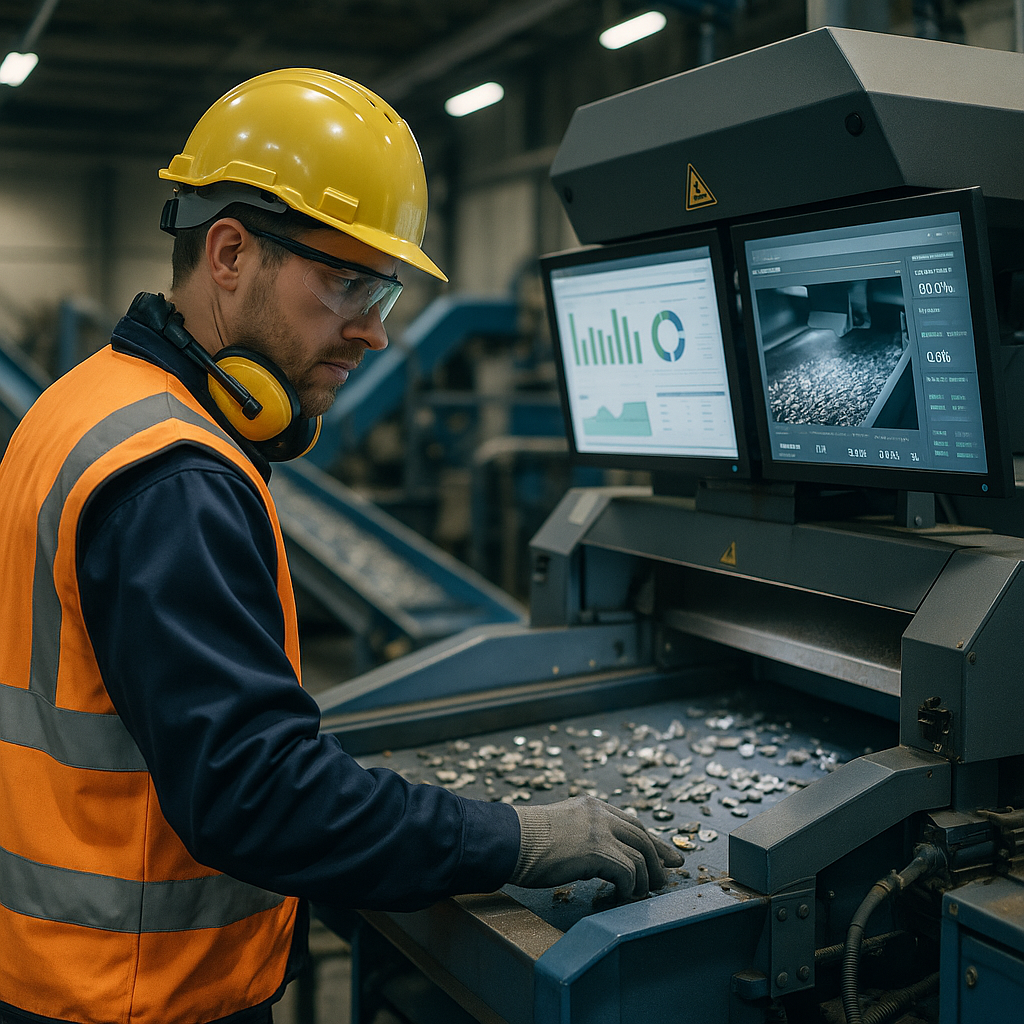5901 Botham Jean Blvd, Dallas, TX 75215
How to Develop a Comprehensive Scrap Metal Recycling Plan
August 17, 2025Metal doesn’t degrade. Your discarded appliances, vehicles, and industrial equipment contain valuable resources that can be recovered and reused instead of mining new raw materials. A scrap metal recycling plan provides the framework for this process to occur efficiently.
A scrap metal recycling plan is a strategic approach to reclaiming metals from end-of-life products for reprocessing and reuse as raw materials. It establishes systematic procedures for the collection, sorting, and processing of scrap metal, transforming waste into valuable resources. These plans are increasingly essential as organizations strive to minimize their environmental footprint.
The core elements of an effective scrap metal recycling plan include identifying recyclable metals, setting up collection methods, implementing sorting protocols, and creating partnerships with recycling facilities. Each step is designed to maximize resource recovery while reducing waste sent to landfills. The environmental benefits are substantial — recycling aluminum saves 92% of the energy required to produce it from raw materials, while steel and copper recycling offers similar advantages.
How Do You Assess Community Needs and Resources?

A successful recycling program begins with a thorough understanding of your community’s specific needs and available resources. This critical first step ensures your program addresses local challenges while making the most of existing assets.
Start by evaluating your community’s size and demographic composition. Smaller communities may benefit from centralized drop-off centers, while larger urban areas might require comprehensive curbside collection services. Consider population density, as this directly impacts collection logistics and program design.
Evaluate Existing Waste Management Systems
Take inventory of your community’s current waste management infrastructure. Document existing collection methods, disposal facilities, and any recycling initiatives already in place. This baseline assessment helps identify gaps and opportunities without duplicating efforts.
Understanding waste composition is equally important. Conduct a waste characterization study to determine what materials make up your community’s waste stream. This data reveals which recyclables are most abundant and should be prioritized in your program.
Local landfill records can provide valuable insights into disposal patterns and volumes. These statistics help quantify potential diversion rates and set realistic goals for your recycling program.
Gauge Public Interest and Awareness
Community support is essential for program success. Use surveys, focus groups, or community meetings to assess awareness levels and attitudes toward recycling. Ask specific questions about willingness to participate, preferred collection methods, and potential barriers to engagement.
Socioeconomic factors significantly influence participation rates. Consider income levels, education, and access to resources when designing your program. Communities with varying demographics may require tailored approaches to ensure inclusive participation.
These assessment tools help identify misconceptions about recycling and reveal education needs. Address these knowledge gaps in your program design to maximize community engagement.
Identify Local Partners and Resources
Map potential recycling infrastructure partners in your area. Local recycling centers, scrap yards, and waste processing facilities can serve as valuable collection and processing hubs. Establish relationships with these partners early in your planning process.
Neighboring communities may offer collaboration opportunities. Regional recycling programs often achieve greater efficiency through shared resources and coordinated efforts. Contact local government recycling coordinators to explore partnership possibilities.
Assess market availability for recyclable materials. The North Carolina Recycling Markets Directory and similar resources can help identify buyers for various materials. Understanding market requirements influences how you’ll collect and process recyclables.
- Conduct community surveys to gauge interest and identify potential challenges
- Review local waste disposal records to understand current waste volumes
- Meet with potential processing partners to determine material requirements
- Evaluate transportation logistics and collection method options
- Research successful programs in similar communities for best practices
A comprehensive assessment not only reveals community needs but also identifies available resources that can be leveraged for program success. This foundation ensures your recycling initiative addresses local priorities while building on existing strengths.
| Metric | Description |
|---|---|
| Volume of Materials Diverted | Measures the percentage of waste diverted from landfills through recycling efforts. |
| Participation Rate | Indicates the level of community involvement and participation in recycling programs. |
| Tonnage of Recyclables | The total weight of materials collected for recycling over a specific period. |
| Reduction in Landfill Waste | Assesses the decrease in waste sent to landfills due to recycling programs. |
| Energy Savings | Calculates the energy conserved by recycling materials instead of manufacturing new products from raw materials. |
| Greenhouse Gas Emissions | Measures the reduction in emissions achieved through recycling activities. |
Remember that assessment isn’t a one-time activity but an ongoing process. Regular evaluation helps your program adapt to changing community needs and evolving recycling markets, ensuring long-term sustainability and effectiveness.
What Are the Key Components of a Recycling Program?
Strategic Collection Points
Successful recycling programs begin with strategically placed collection points. Install recycling bins in high-traffic areas where waste tends to accumulate. For metal recycling, place clearly labeled containers in locations that suit your facility’s layout.
Visibility is crucial for collection points. Use bright colors and clear signage to differentiate recycling bins from general waste containers. Each bin should feature simple instructions about which metal types belong inside. The easier it is for participants to identify where materials go, the higher your collection rates will be.
Consider the practical aspects of your collection system. Bins should be sized appropriately for the volume of recyclables generated in each area. If too small, they’ll overflow quickly; if too large, they become obstacles. Finding the right balance ensures efficiency and encourages consistent participation.
Recycling Center Partnerships
Strong relationships with local recycling centers form the backbone of an effective program. Research facilities in your area that accept the specific metal types your organization generates. Many recycling centers specialize in particular materials and offer better rates for certain metals.
When selecting partners, evaluate their proximity, processing capabilities, and sustainability practices. Transportation costs can significantly impact your program’s economic viability. Centers that provide pickup services might be worth a premium if they can reduce your logistics burden.
Formal agreements with recycling partners should clearly outline responsibilities, pricing structures, and material quality requirements. Many facilities reject contaminated loads, which can undermine your program’s economics. Regular communication with your partners helps adapt to changing market conditions and processing requirements.
Effective Promotion Strategies
Even the most well-designed recycling program needs effective promotion to succeed. Build awareness through multiple channels to reach your entire target audience. Social media platforms offer cost-effective ways to share program updates, success stories, and recycling tips.
Engaging with local media extends your reach beyond digital channels. Press releases about program launches or milestone achievements can generate community interest. Consider partnering with local news outlets for feature stories highlighting your recycling efforts and environmental impact.
Community events create opportunities for direct education and engagement. Host collection drives, facility tours, or informational sessions to connect with participants face-to-face. Such interactions build commitment to your program and allow you to address questions or concerns immediately.
Participation Incentives
Strategic incentives can significantly boost participation rates. Financial rewards like rebates, discounts, or revenue-sharing from recycled materials provide direct motivation. For community programs, consider contests that recognize top-performing departments or neighborhoods.
Recognition programs acknowledge participants who consistently support recycling efforts. Public appreciation through newsletters, social media mentions, or award ceremonies reinforces positive behaviors. Such social incentives often prove as effective as financial rewards in maintaining long-term engagement.
Educational incentives highlight the environmental impact of recycling participation. Sharing metrics about resources saved, pollution prevented, or community benefits creates emotional connections to your program. When people understand the difference their actions make, they’re more likely to participate consistently.
Performance Tracking Systems
Implement robust tracking mechanisms to measure your program’s performance. Start with baseline measurements before launch, then collect data regularly on volumes collected, contamination rates, participation levels, and cost savings. This information guides program refinements and demonstrates value to stakeholders.
Simple spreadsheets can work for basic tracking, but dedicated software offers more comprehensive analysis capabilities. Many recycling partners provide reporting tools as part of their services. Whatever system you choose, consistency in measurement methodology ensures reliable trend analysis.
Regular program reviews turn tracking data into actionable improvements. Schedule quarterly evaluations to identify successes and challenges. Adjust collection systems, education efforts, or partner relationships based on performance data. Continuous improvement keeps your program relevant and effective as conditions change.
Communicate results transparently to all stakeholders. Regular updates on progress toward goals maintain enthusiasm and accountability. Sharing both successes and challenges builds trust and encourages collaborative problem-solving among program participants.
| Component | Description |
| Management Support | Engaging top management is essential for both financial backing and program buy-in across the organization. |
| Waste Audit | Initial assessment of materials generated helps identify recycling opportunities and potential cost savings. |
| Local Partnerships | Establish relationships with local recycling facilities and processing partners to ensure logistic support. |
| Costs and Incentives | Understand financial aspects of recycling, including potential savings from waste reduction and funding from recycling revenues. |
| Employee Engagement | Educate and involve employees through communication of program goals and benefits to boost participation. |
| Monitoring and Evaluation | Track program performance through regular audits and assessments to ensure ongoing improvement and adaptation. |
How Can Technology Optimize Scrap Metal Recycling?

The scrap metal recycling industry is undergoing a technological transformation, enhancing operations across the entire value chain. Modern technology solutions are making recycling processes more efficient, profitable, and sustainable, from collection to final processing.
Digital Waste Management Systems
Integrated waste management software facilitates seamless process flows between scrap yards and recycling facilities. These systems connect all operational aspects, eliminating data silos and providing real-time information throughout the recycling ecosystem. Modern platforms enable efficient tracking of materials from entry into the scrap yard to their conversion into recycled products.
Digital management systems enhance communication between facility operators, transporters, and processors, reducing delays and eliminating paperwork. This integration is particularly valuable for operations managing multiple collection points or collaborating with various recycling partners.
Inventory Management Software
Specialized inventory tracking software gives recyclers unprecedented control over their scrap metal stock. These systems allow operators to print and scan barcodes, define material categories, track pricing, and integrate with other business modules for greater efficiency. Advanced systems incorporate features like:
- Real-time inventory visibility across multiple locations
- Automated reorder points for production materials
- Integration with weighing systems for accurate measurements
- Material categorization by type, grade, and value
With accurate inventory data, recyclers can make informed decisions about when to sell materials based on market conditions, ensuring maximum profitability. Precise tracking of material flows also helps identify operational bottlenecks and optimization opportunities.
Route Optimization Technology
Transportation is a significant cost in scrap metal recycling. Route optimization software uses algorithms to plan the most efficient collection and delivery routes, reducing fuel consumption, vehicle wear, and labor costs. These systems consider factors such as:
- Traffic patterns and road conditions
- Vehicle capacity and load types
- Time windows for pickups and deliveries
- Driver availability and hours of service
Some advanced systems even incorporate real-time data to adjust routes dynamically in response to unexpected conditions. For recyclers operating truck fleets, route optimization delivers significant cost savings while reducing environmental impact through lower emissions.
Metal Analysis Technology
Accurate identification and sorting of metals are critical for maximizing recycling value. Modern metal analyzers use technologies like X-ray fluorescence (XRF) and Laser Induced Breakdown Spectroscopy (LIBS) to quickly identify metal types and compositions with precision.
Handheld XRF analyzers allow recyclers to identify metals in seconds, distinguishing between similar-looking alloys that might have vastly different values. This technology can detect valuable metals like copper, aluminum, brass, and stainless steel, as well as potentially hazardous materials that require special handling.
LIBS analyzers are particularly useful for carbon analysis in metals and alloys, providing complementary capabilities to XRF technology. When implemented together, these technologies ensure that materials are properly sorted, maximizing their recycling value and preventing contamination.
Compliance and Reporting Solutions
Regulatory compliance is becoming increasingly important in the recycling industry. Digital compliance solutions help recyclers meet state and local anti-theft regulations while simplifying reporting requirements. These systems typically include:
- Digital signature and thumbprint capture capabilities
- Automated report generation for regulatory submissions
- Integration with cameras and other verification hardware
- Secure storage of compliance documentation
By automating compliance processes, recyclers can reduce administrative burdens while ensuring they meet all legal requirements. These systems also provide an audit trail valuable for regulatory inquiries.
Data Analytics for Business Intelligence
The data generated by recycling operations is a valuable resource when properly analyzed. Business intelligence tools can process this information to identify trends, predict market movements, and optimize operations. Recyclers are increasingly using data analytics to:
- Predict maintenance needs before equipment failures occur
- Identify optimal times to buy or sell specific materials
- Track productivity across different operational areas
- Analyze the profitability of various material streams
These insights enable recyclers to make data-driven decisions that improve efficiency and profitability. Analyzing historical data also helps businesses understand seasonal patterns and market trends, allowing for more strategic planning.
Technology adoption in scrap metal recycling is essential for businesses seeking to remain competitive. From sophisticated sorting equipment to comprehensive management software, technological solutions are revolutionizing recycler operations, helping them process more material with greater efficiency and profitability while reducing environmental impact.
Conclusion: Launching Your Scrap Metal Recycling Plan

Creating a successful scrap metal recycling plan involves careful preparation and strategic execution. By assessing community needs and establishing strong partnerships with local recycling centers, you lay the foundation for long-term success. These partnerships provide the necessary infrastructure to process materials efficiently while fostering important community connections.
Technology integration and community engagement are central to modern recycling initiatives. Strategic digital outreach, well-placed collection points, and educational programs increase participation and improve material quality. Together, these elements help recycling programs deliver significant environmental benefits through landfill diversion and resource conservation, generating economic value through cost savings and potential revenue.
Ready to transform metal waste into a valuable community resource? Contact Okon Recycling at 214-717-4083 for expert guidance on implementing your scrap metal recycling plan.
